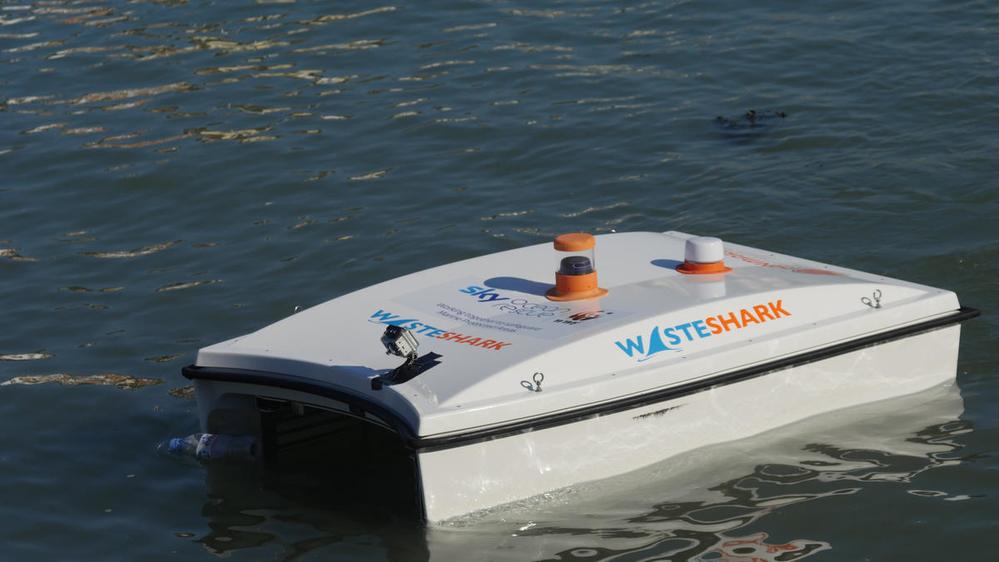WasteShark: Drone Aims to Solve Plastic Pollution

Oceans are filling up with human waste, specifically plastics that are intoxicating natural sea life and ecosystems. With growing populations and growing demand for plastics, this issue is seemingly going to skyrocket within the next decade. As of 2016, there were approximately 150 million metric tons of plastic in the world’s oceans, per a report by the World Economic Forum. Economically, it has been estimated that marine litter costs the EU economy EUR 690 million per year, affecting mainly the tourism and fishery sectors. So what are the solutions and are they the right step to a sustainable ocean ecosystem?
WasteShark
Meet RanMarine Technology BV, an environmental technology company, using drones in ports, harbors, marinas, and inland water environments to clean up debris. RanMarine Technology’s fully autonomous drones swim through the water, collecting waste. With a size of over 5×3.5 feet, it can carry up to 352 lbs of trash and has an operational battery life of 16 hours. Equipped with an advanced detection system, WasteShark uses laser and ranging technology to detect objects in its path to ensure smooth operating.
The drone itself is modeled after and operates under the same principles as a whale shark, a filter-feeding fish that swims slowly with its mouth open sucking in plankton and fish. The device glides smoothly through the water, collecting plastics and other trash in its basket, and then brings them to shore to be disposed of or recycled.
Instead of deploying nets or larger vessels to collect unwanted plastics and biodegradables, the drone provides an efficient, safe and inexpensive alternative for cleaning up urban, rural, industrial, and leisure environments. Its agile design and maneuverability allow it to enter hard-to-reach spaces, turn on the spot and easily navigate in waterway traffic and between boats.
Done, Right?
Now that WasteShark has picked up all the garbage from an area, you might be thinking the jobs done. However, 50% of the job remains. The collected garbage must go somewhere, either to be dumped in a landfill or recycled at a fossil fuel-intensive recycling facility. Whatever the case, it’s not great. So why even invent such a device? Well, cleaning our oceans is a Reactionary solution, and with the vasts amount of plastics and micro-plastics invading sea life, devices like the WasteShark and needed to reduce our current footprint. But to truly create a difference, we need Proactive solutions. This is where you can help, by either buying reusable products or urge your authorities to eliminate single-use plastics, there are countless ways you can help.
Once trash reaches the open ocean it’s everybody’s problem… and nobody’s fault. We need to stop trash from reaching the ocean in the first place.
The solution can be split into 4 key areas, with an emphasis on Proactive Solutions.
First, we need to change human behavior, whether that be eliminating single-use plastics or something as simple as reducing our intake. Then we have to switch our production, or alternatively improve our efficiency. This means producing better products, not more or quicker, but higher quality products that will last longer and that can be completely recycled or decomposed. Moving on to the reactionary solutions, we need to use devices like the WasteShark to extract the heaps of trash that is situated in our oceans, and finally, we ought to block off common paths that lead trash into our oceans.
In any case, devices like the WasteShark are useful and forward-thinking, but shouldn’t be relied upon as another environmental “Get out of Jail Free” card.


Leave a Reply